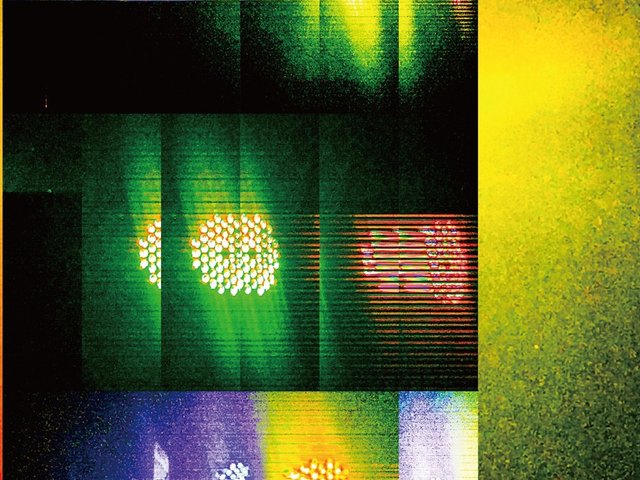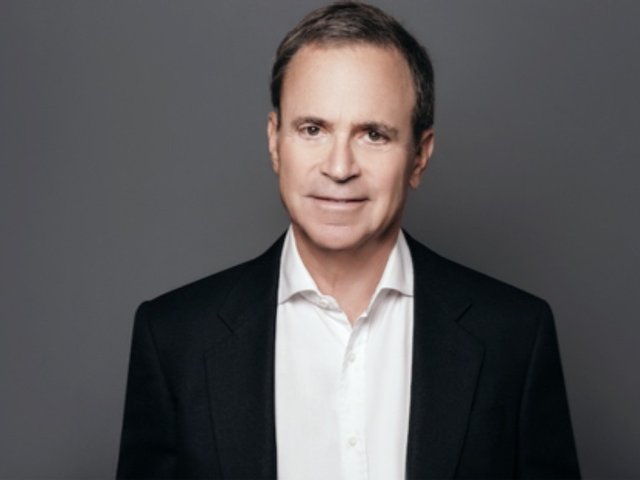Adrian Cheng has been a leading figure in Hong Kong’s art world for the past two decades. He has played a central role across the spheres of art, design and retail as the special administrative region has grown as a centre for the south Asian art market, with international art galleries and auction houses increasingly basing themselves there, the museum sector expanding and the Art HK art fair becoming Art Basel Hong Kong.
In 2008, Cheng founded K11, a property business dedicated to “cultural commerce”—integrating museum-standard art with high-end shopping malls in Hong Kong and mainland China—and responsible for developing the Victoria Dockside global art and cultural district, home to K11 MUSEA, on Hong Kong’s harbourfront.
For many years, he held leadership roles at K11 and at New World Development Company, the leading Hong Kong property business founded by his grandfather.
The K11 model made headlines in 2014 when K11 Art Mall in Shanghai hosted 40 paintings by Claude Monet, including works from the Water Lilies and Wisteria series, lent by the Musée Marmottan Monet in Paris lent. Cheng tells The Art Newspaper that the decision was partly inspired by his love of the foundational set of Monet’s Water Lilies in the oval gallery at the Musée de l’Orangerie in Paris.

The Monet show at K11 Art Mall, Shanghai, in 2014 Courtesy K11 Art Foundation
The move coincided with the 50th anniversary of Sino-French cultural relations, a subject the two foundations founded by Cheng have close connections to. The K11 Craft & Guild Foundation (KCG), established in 2018, supports traditional Chinese craftsmanship, and is at present supporting a two-year research project with the Centre de recherche du château de Versailles. The K11 Art Foundation (KAF), meanwhile—set up by Cheng in 2010—supports Asian contemporary artists and has formed partnerships with institutions including the Palais de Tokyo and the Pompidou Centre in Paris; the Metropolitan Museum of Art and New Museum in New York City; the Los Angeles County Museum of Art (Lacma); and Serpentine Galleries and the Royal Academy of Arts (RA) in London.
Another major K11 Art Foundation venture is its regular salon, launched in September 2024 during Frieze Seoul art fair. The salons have a strong emphasis on the junction of art and technology, and Cheng describes them to The Art Newspaper as “a think tank for cultural evolution, attuned to the demands of today’s hybrid art economy”.
The latest iteration was held on 23 October, as part of the Asia Now art fair, during Paris Art Week. It featured the London-based Chinese artist Vivien Zhang and the curator and writer Alexis Loisel-Montambaux (one of the curatorial duo CRO), in a discussion exploring ecological relationships and multisensorial approaches to exhibition making, moderated by the curator, art historian and writer John Tain.
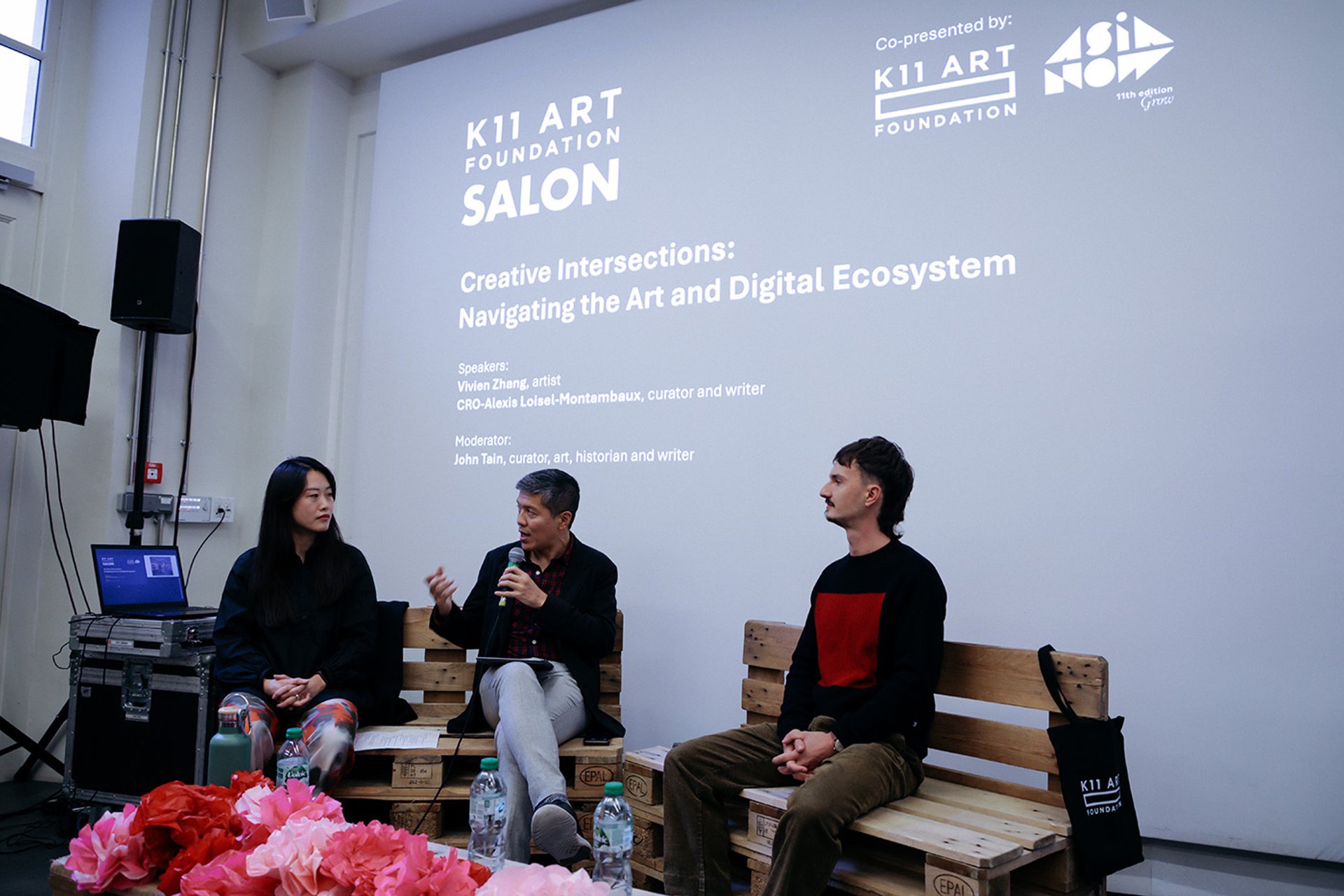
The artist Vivien Zhang (left) in coversation with the curator and writer Alexis Loisel-Montambaux (right, one of the curatorial duo CRO), moderated by the curator, art historian and writer John Tain, at a K11 Art Foundation Salon in Paris, October 2025 Courtesy K11 Art Foundation
Also this year, Cheng launched K11 by AC, his latest venture in cultural retail development and management. The company is designed for a range of audiences from art lovers to millennials and Gen-Z. He has also founded the ALMAD Group, a conglomerate focused on culture, entertainment, sports, media, healthcare, commercial management and cultural tourism.
Cheng spoke to The Art Newspaper about Hong Kong as a global art centre; his life as a collector; and what most excites him about the work of artists and curators who work at the junction of art and technology.
The Art Newspaper: You have been championing Hong Kong as an international centre for fine art for more than 15 years. How do you view the future of Hong Kong within the global art market?
Adrian Cheng: Hong Kong is definitely going to play a key role as a centre for international art trade. The Hong Kong government set up a Mega Arts and Cultural Events Fund in 2023 to encourage large-scale cultural events in Hong Kong and to make it an East-meets-West international hub and gateway to mainland China. Seventeen such mega arts and cultural projects have been approved in the past three years, with total funding of over HK$198 million.
Hong Kong has a supportive art and culture ecosystem with institutions such as M+, Tai Kwun and the Hong Kong Palace Museum encouraging engagement and education, and cultivating new collectors and patrons of art. In addition, Hong Kong does not impose import duties, VAT, or goods and services tax on artworks and is home to leading auction houses such as Sotheby’s, Christie’s, and Phillips.
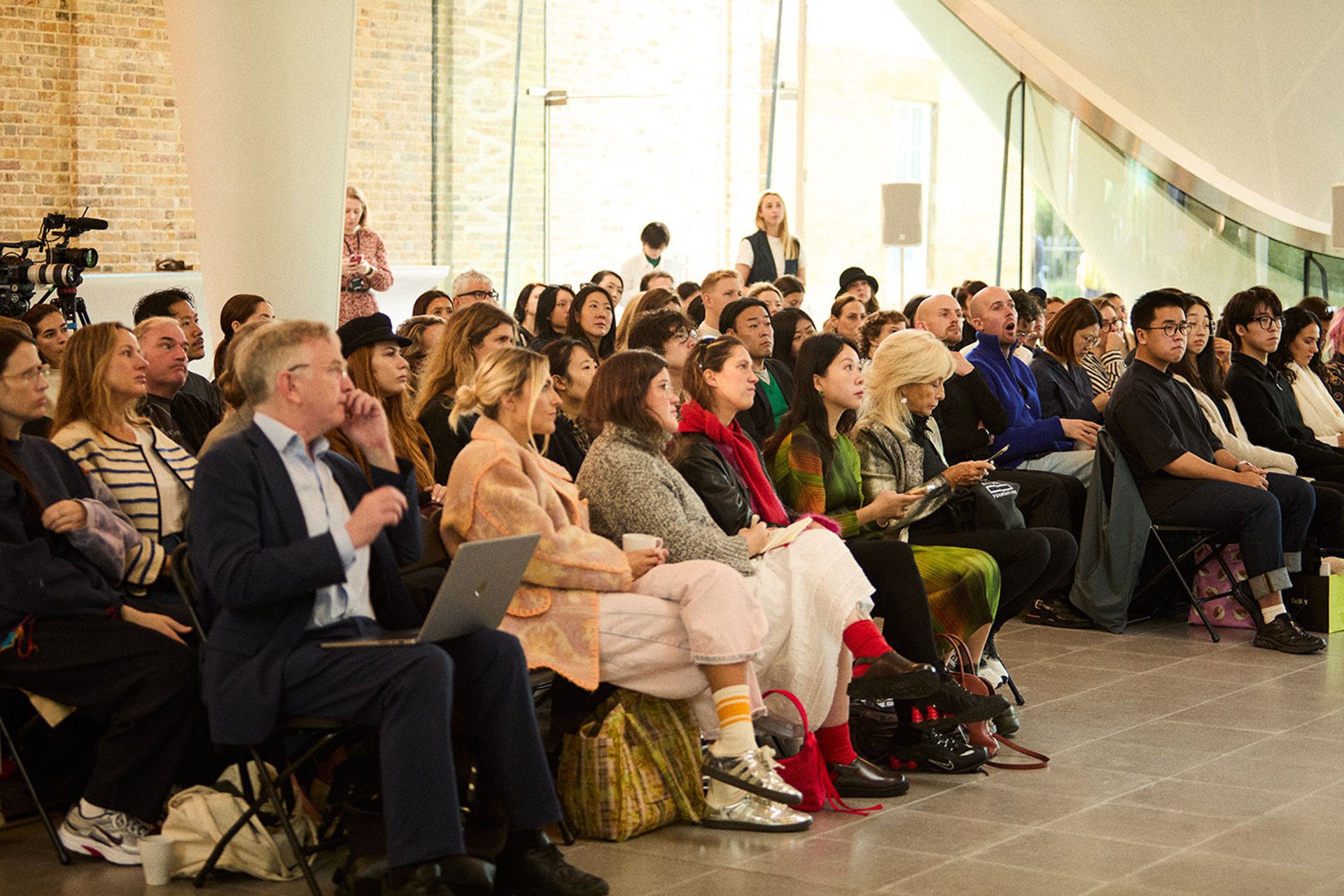
The K11 Art Foundation Salon at Serpentine Galleries, London, in October 2024 Courtesy K11 Art Foundation
K11 Art Foundation (KAF) has been in operation now for 15 years. What are its immediate and longer-term plans?
The foundation itself focuses on nurturing emerging Asian artists and curators—with biennial artist and curator prizes falling in alternate years—and fosters contemporary art development. It organises exhibitions and residencies, in partnership with global institutions, to promote cross-cultural collaboration. Since its foundation it has helped support 1,600 exhibitions and educational programmes, involving over 900 artists, curators and organisations.
The K11 Art Foundation Salon is a recent addition to the foundation’s work, with a focus on cutting-edge discussions about the meeting of art and technology, covering topics such as digital transformation and the digital preservation of art. In the past 12 months we have held 10 salons in seven cities, including the event during Paris Art Week this year. We already have plans in place for 2026, with salons scheduled for Hong Kong Art Week, Art Basel in Basel and Berlin Art Week.
I see the salon as a cross-cultural open platform that cultivates dialogue between creative insiders and the wider public. It is more than a showcase—it functions as a think tank for cultural evolution, precisely attuned to the demands of today’s hybrid art economy. It sits within a broader ecosystem committed to cultural retail: a fusion of commerce, creativity and community. K11 Art Foundation Salon is well placed to shape conversations around the future of art, where boundaries between disciplines, media, and audiences are increasingly fluid.
The development of the K11 Art Foundation Artist Prize has been supported by our international council, which we plan to expand and recognise in the coming months.

An exhibition of the work of the artist Martin Gross at K11 art village, Wuhan, following the artist's March 2019 residency in Wuhan presented by the Royal Academy of Arts (RA), London, in partnership with K11 Art Foundation Courtesy K11 Art Foundation
What are your upcoming plans for K11 Craft & Guild Foundation (KCG), including its existing collaboration with the Centre de recherche du château de Versailles (CRCV)?
KCG is sponsoring a two-year research project led by Mathieu Da Vinha, director of the CRCV. The project enhances Sino-French cultural exchange by studying craftsmen working at the Château de Versailles under the rule of Louis XIV and comparing them to their Chinese counterparts. The findings will be made accessible on CRCV’s academic platform Prosocour.
KCG plays a pivotal role in conserving and rejuvenating fast-disappearing Chinese craftsmanship by fostering academic research, public education, culture exchange and cross-disciplinary collaborations. KCG’s core focus is on Guangcai (Canton enamel porcelains), Baibaoqian (semi-precious stone inlays), Luodian (mother of pearly inlay), gilt-decoration, plaster moulding, wooden architecture and Kesi (silk tapestry technique). The foundation positions these crafts on a global stage through collaborations with museums, luxury brands and academic institutions. This brings traditional craftsmanship into the present, connects Chinese culture and aesthetics with the world, nurtures the next generation, and achieves sustainable craft conservation and development.
This year, the foundation has been focusing on goldsmithing: Xinjiang Province style goldsmithing—a legacy of cultural exchange and dialogue along the Silk Road; and Beijing Imperial goldsmithing—an exquisite art of the Imperial Qing Court.

The artist Zhang Jian-Jun during his September 2019 residency at the Royal Academy of Arts (RA) Schools, London, presented by the RA in partnership with K11 Art Foundation Courtesy K11 Art Foundation
What was the first work you bought?
My first purchase was a limited-edition lithograph by a young Hong Kong printmaker, acquired at a student showcase during my college days. That modest investment ignited my passion for championing emerging voices and reminds me that collecting is as much about the stories and connections behind each work as it is about the object itself.
What was the last work you bought?
My most recent acquisition is a generative digital work by Cheng Ran in collaboration with the applied science artist Sun Bohan. It is driven by algorithmic code. I was drawn to how it blurs art and technology—each viewing feels both familiar and brand-new, a meditation on memory, time and the evolving nature of perception.

Adrian Cheng at the show of paintings by Claude Monet at K11 Art Mall, Shanghai, 2014 Courtesy K11 Art Foundation
What do you regret not buying when you had the chance?
I regret not securing a site-specific painting by Matthew Wong. We had commissioned him to create an original work for one of our public-development projects in Hong Kong, and he accepted the commission enthusiastically. Tragically, he passed away before completing the piece. I did not have the opportunity to introduce his luminous vision into a public space.
If you could have any work from any museum, what would it be?
If I could “have” a single masterpiece in its truest sense—remaining in dialogue with its intended space—it would be Claude Monet’s Water Lilies at the Musée de l’Orangerie. That piece inspired me to host the first Claude Monet exhibition in China at K11 Shanghai in 2014 [with paintings from the Musée Marmottan Monet]. More than 300,000 people experienced those luminous lily ponds firsthand, and I witnessed how art can transform a space into a collective sanctuary of mindfulness.
Who are the fellow collectors you most admire—whether contemporaries or from previous eras?
My admiration goes to the Medici family of Renaissance Florence. They invented art patronage as a public force, commissioning masterpieces that wove art into politics, philosophy and civic life. By nurturing artists like Donatello, Filippo Brunelleschi and Sandro Botticelli, they transformed collecting into a catalyst for cultural renewal. Their legacy reminds us that true patronage is about empowering creativity and shaping society.
What most interests you today in the world of art and technology? And how is that reflected in your plans for both foundations and the K11 Art Foundation Salon?
In an era where artificial intelligence (AI) evolves daily, the most thrilling frontier is the emergence of genuine machine-human partnerships—catalysts for cross-disciplinary dialogue. When technology becomes as intuitive and expressive as paint, the boundaries between disciplines begin to dissolve. Engineers, scientists, dancers, musicians and visual artists can collaborate in real time, exchanging methods and sparking ideas. This fluid interplay accelerates innovation, ensuring that breakthroughs arise not from isolated silos but from the convergence of diverse minds.
At K11 Art Foundation Salon, we’re curating a dynamic suite of programmes that celebrate this new model of cross-disciplinary partnership.
What most interests you about how artists are using AI?
What fascinates me most is how artists are using code as a brush—transforming algorithms into expressive tools. Artists are writing code the way painters mix pigments, shaping generative systems that respond, evolve and surprise. Instead of controlling every detail, artists set the conditions and let the machine collaborate—introducing unpredictability, nuance, and even emotion into digital creation. It’s a new kind of craftsmanship, where logic meets intuition.
How do you see the future of collecting?
I see more collectors holding hybrid portfolios combining physical works with digital editions. Fractional ownership models will democratise collecting. Augmented and virtual reality tools will continue to enable immersive display and interaction. Transparent provenance on public ledgers will change how collectors conduct research.
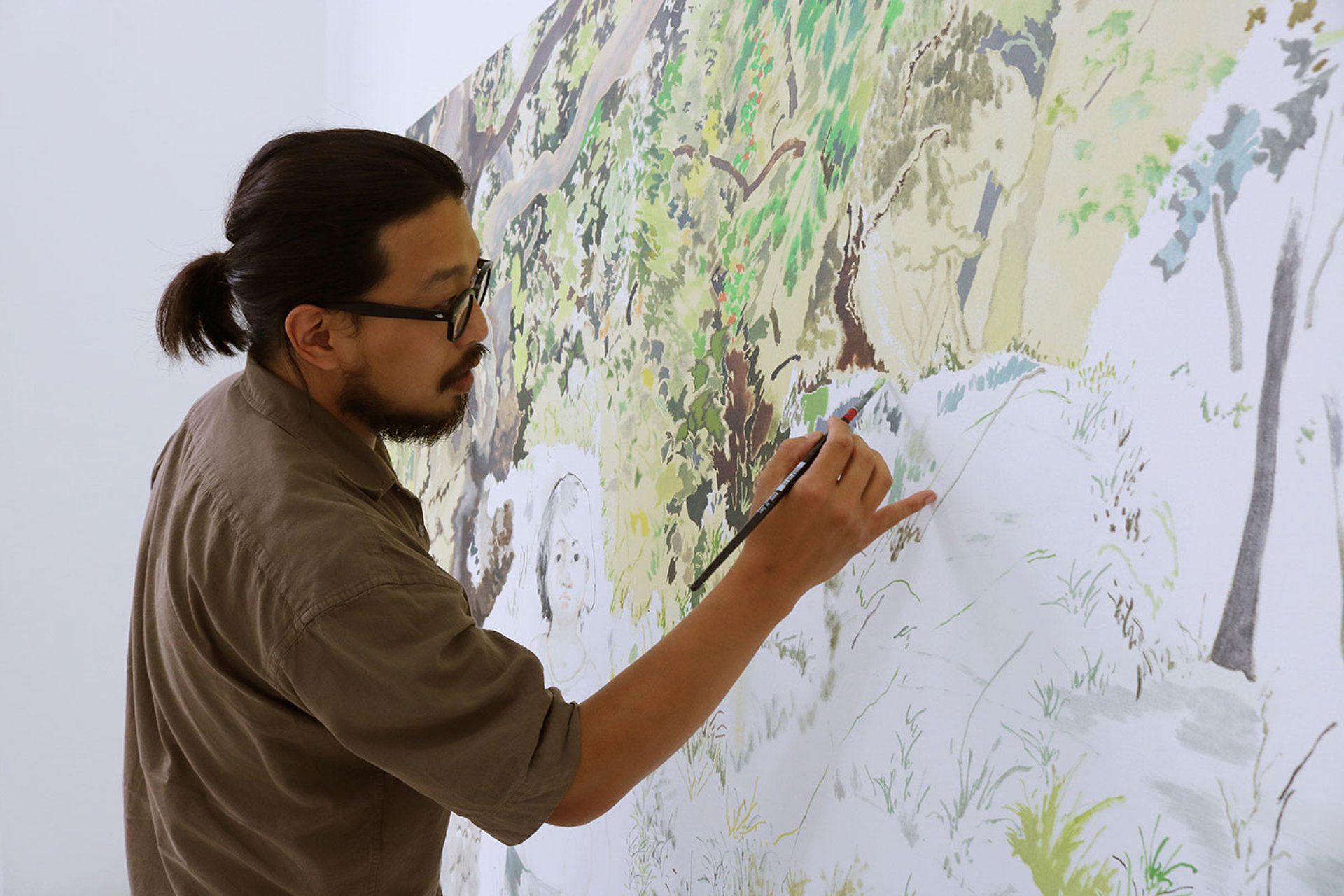
The artist Chris Huen Sin Kan during his 2022 residency at the Royal Academy of Arts (RA) Schools, London, presented by the RA and K11 Art Foundation Courtesy K11 Art Foundation
Do you think the markets need to move beyond the gallery tradition of star making, to allow more diversity?
I think galleries will remain indispensable as trusted curators and champions of artistic quality, but we can’t ignore how social media reshapes discovery, taste and community-building. Platforms such as Instagram, X, and TikTok allow emerging artists to bypass traditional gatekeepers, cultivate niche followings and engage collectors directly. To foster true diversity, I believe the market will shift to a hybrid approach that leverages both gallery expertise and digital channels—think online partnerships and community-driven platforms—so that under-represented voices can thrive alongside established stars.
Does the conjunction of contemporary art, supported by K11 Art Foundation, and craft, encouraged by K11 Craft & Guild Foundation, serve as a reminder of how crafts such as jewellery, wine making and fashion sit in clear company with fine art?
The divide between fine art, craft and design has been under debate ever since industrialisation shifted how we produce and consume objects. Traditionally, fine art was prized for posing questions—philosophical, social, formal—while craft and design were seen primarily as functional.
But today that gap is closing. I see jewellery designers, vintners and fashion makers who are not just perfecting technique; they’re engaging with narratives, cultural critique, even political ideas through their work. In every hand-woven textile or custom-blended wine, there’s an intentionality that rivals a gallery installation.
To me, “the art in the craft; the craft in the art” is a reminder that mastery and meaning co-exist. When a jeweller chooses a setting to evoke memory, or a winemaker adjusts fermentation to tell a terroir story, they’re asking questions just as deeply as any painter or sculptor.



